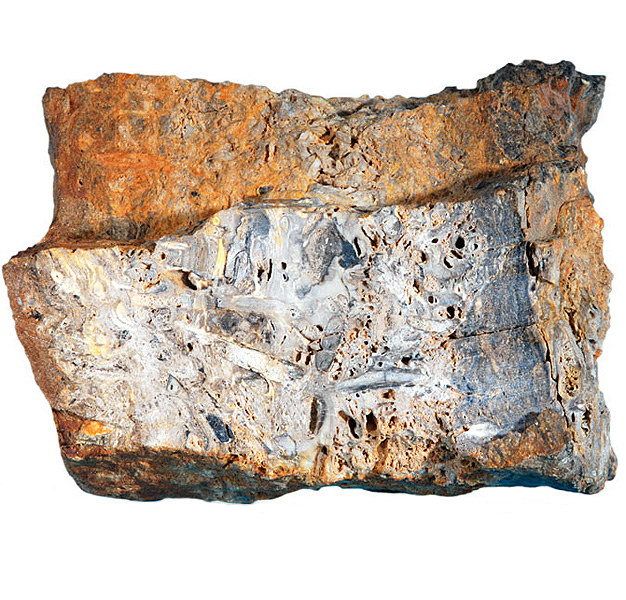
Fact sheet
This chert sample is a unique blue-grey, silica-rich sedimentary rock collected near the village of Rhynie in the Grampian Highlands of Scotland. The Rhynie chert is a sinter, an opaline silica deposit that formed in the Early Devonian period, between 400 and 412 million years ago. Sinter is a natural deposit that forms near hot springs, coating rocks and any other objects placed in the water. What makes the Rhynie chert unique is that it contains exceptionally well-preserved fossils of some of the earliest plants and animals to colonise the land, including the remains of the oldest known, arthropods (insects).
In thin section the chert is a heterogeneous mixture of finely crystalline quartz, later porosity fillings, and many fragments of plants. There is some evidence of fossil plants in this thin section and there may even be evidence of insect fossils but we haven't found any yet.
The United Kingdom Virtual Microscope (UKVM) collection consists of igneous, sedimentary and metamorphic rocks from around the UK.
It is intended as a teaching resource, helping to tell the story of the common rock types and how they form, and reflecting the history of the UK at the margins of the continent of Europe. The collection is a series of teaching sets, for example igneous rocks from the North Atlantic Igneous Province and SW England; high-temperature metamorphic rocks from Scotland and low-temperature metamorphic rocks from Wales; and sedimentary rocks, including English limestones and sandstones.






